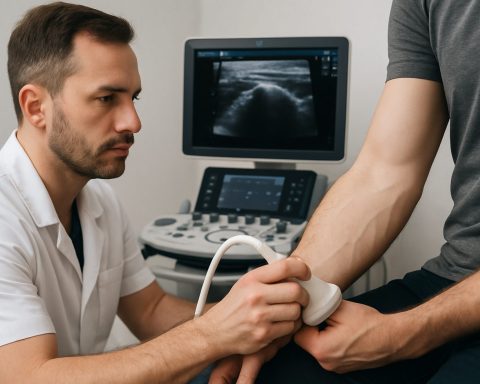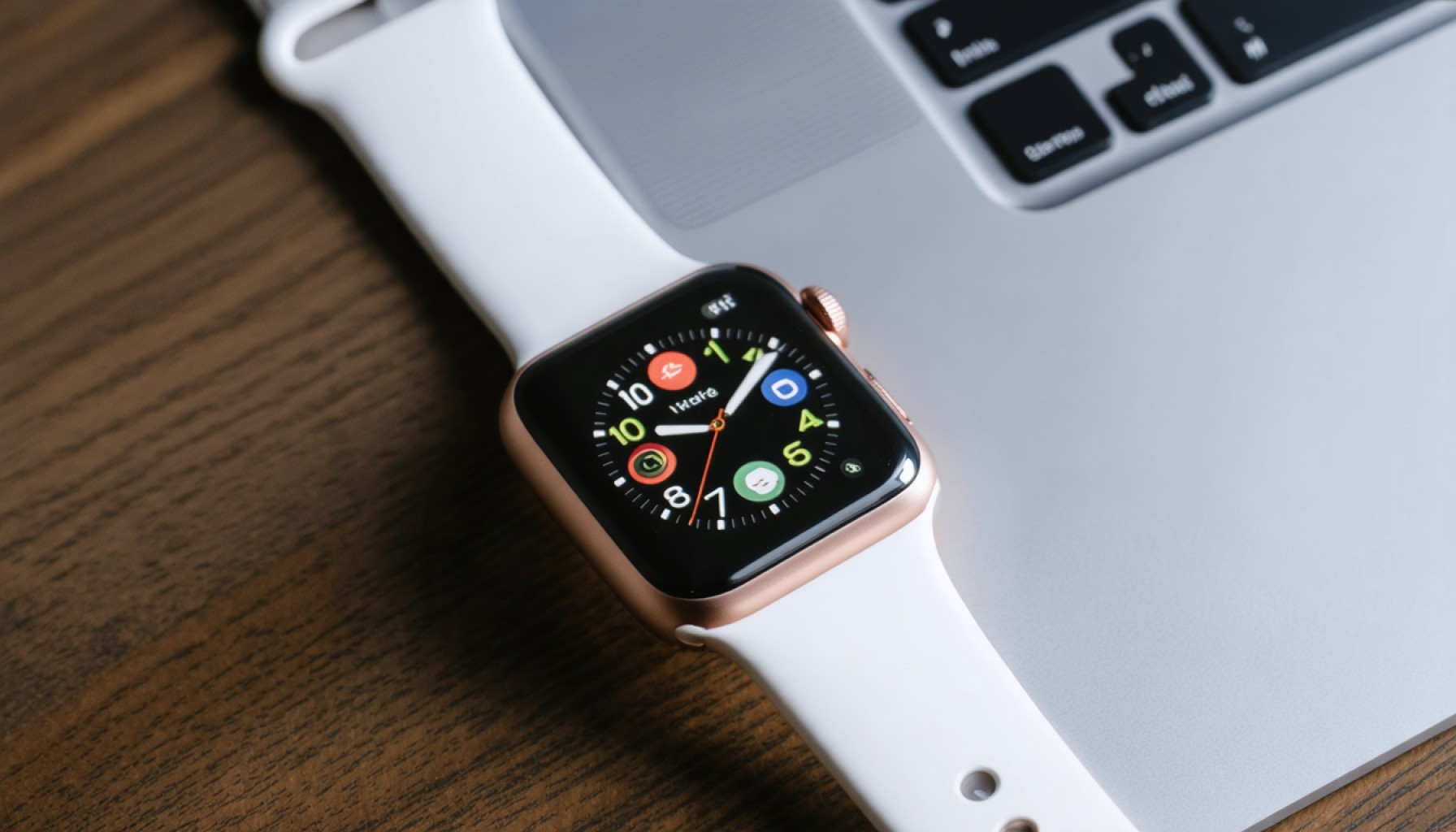Phantom Limb Pain: Why Do Amputees Feel Pain in Missing Limbs? Exploring the Science, Treatments, and Human Stories Behind This Puzzling Phenomenon.
- Introduction: Defining Phantom Limb Pain
- Historical Perspectives and Early Theories
- Neurobiology: How the Brain Processes Phantom Sensations
- Risk Factors and Prevalence Among Amputees
- Clinical Presentation: Symptoms and Patient Experiences
- Diagnostic Challenges and Assessment Tools
- Current Treatment Approaches: Medications, Therapies, and Innovations
- Emerging Research: Virtual Reality and Mirror Therapy
- Psychological Impact and Quality of Life Considerations
- Future Directions: Promising Advances and Unanswered Questions
- Sources & References
Introduction: Defining Phantom Limb Pain
Phantom limb pain (PLP) is a complex neuropathic condition characterized by the perception of pain or discomfort in a limb or part of a limb that has been amputated. Despite the physical absence of the limb, individuals with PLP experience sensations that can range from mild tingling or itching to severe, debilitating pain. This phenomenon is distinct from non-painful phantom sensations, which may include the feeling that the missing limb is still present but without pain. PLP is reported by the majority of amputees, with prevalence estimates ranging from 50% to 80%, making it a significant clinical concern in post-amputation care.
The underlying mechanisms of phantom limb pain are not fully understood, but current research suggests that it involves a combination of peripheral, spinal, and central nervous system changes. After amputation, nerve endings at the site of the amputation (the stump) may form neuromas, which can generate abnormal signals. These signals are believed to be interpreted by the brain as originating from the missing limb. Additionally, the brain’s somatosensory cortex, which is responsible for processing sensory information from the body, undergoes reorganization following limb loss. This cortical reorganization is thought to contribute to the persistence and intensity of phantom limb pain.
Phantom limb pain can have a profound impact on an individual’s quality of life, affecting physical functioning, emotional well-being, and social participation. The pain may be constant or intermittent and can be triggered or exacerbated by factors such as stress, weather changes, or pressure on the residual limb. The management of PLP is challenging due to its multifactorial nature, often requiring a multidisciplinary approach that may include pharmacological treatments, physical therapy, psychological support, and emerging interventions such as mirror therapy and neuromodulation.
Recognized authorities such as the National Health Service (NHS) and the Mayo Clinic provide comprehensive information and guidance on the diagnosis and management of phantom limb pain. These organizations emphasize the importance of early intervention and individualized treatment plans to address the unique needs of each patient. Ongoing research by institutions like the National Institutes of Health (NIH) continues to advance understanding of the condition, with the goal of improving outcomes for those affected by PLP.
Historical Perspectives and Early Theories
The phenomenon of phantom limb pain (PLP) has intrigued medical practitioners and scientists for centuries. Historical accounts of sensations in amputated limbs date back to the 16th century, with French military surgeon Ambroise Paré providing some of the earliest documented descriptions. Paré observed that soldiers who had lost limbs in battle often reported vivid sensations, including pain, in their missing extremities. However, it was not until the 19th century that the term “phantom limb” was formally introduced by American neurologist Silas Weir Mitchell, who extensively studied Civil War amputees and provided detailed clinical observations of their experiences.
Early theories regarding the origins of phantom limb pain were largely speculative and reflected the prevailing medical paradigms of their times. In the 19th and early 20th centuries, the dominant view was that PLP resulted from irritation or neuroma formation at the site of amputation. This “peripheral theory” posited that abnormal nerve activity in the residual limb sent erroneous pain signals to the brain, leading to the perception of pain in the absent limb. Surgical interventions aimed at removing neuromas or resecting nerves were common, though often unsuccessful in providing lasting relief.
As neuroscience advanced, alternative explanations emerged. The “central theory” suggested that PLP was rooted in changes within the central nervous system, particularly the brain and spinal cord. This perspective gained traction in the mid-20th century, as researchers observed that some patients experienced phantom sensations even when the peripheral nerves were completely severed or destroyed. The concept of “cortical reorganization”—the idea that the brain’s sensory map adapts to the loss of input from the amputated limb—became a cornerstone of modern understanding. This theory was further supported by neuroimaging studies in the late 20th and early 21st centuries, which demonstrated that areas of the brain previously dedicated to the missing limb could be activated by stimuli elsewhere on the body.
Throughout history, the study of phantom limb pain has been shaped by evolving scientific knowledge and technological advancements. Today, organizations such as the International Association for the Study of Pain (IASP) play a pivotal role in defining, researching, and disseminating information about PLP. The IASP, a leading global authority on pain, has contributed to the standardization of terminology and the development of evidence-based guidelines for the assessment and management of phantom limb pain. These historical perspectives and early theories continue to inform contemporary research and clinical practice, highlighting the complex interplay between peripheral and central mechanisms in the genesis of phantom limb pain.
Neurobiology: How the Brain Processes Phantom Sensations
Phantom limb pain (PLP) is a complex phenomenon in which individuals experience pain or other sensations in a limb that has been amputated. The neurobiology underlying PLP reveals intricate interactions between the peripheral and central nervous systems, particularly the brain’s remarkable capacity for adaptation and reorganization. After amputation, the brain regions that previously processed sensory input from the missing limb do not become inactive; instead, they undergo a process known as cortical reorganization. This neuroplasticity is a double-edged sword: while it allows the brain to adapt to new circumstances, it can also lead to maladaptive changes that contribute to the persistence of phantom sensations and pain.
The primary somatosensory cortex (S1), located in the parietal lobe, contains a “map” of the body known as the homunculus. When a limb is lost, the corresponding area in S1 no longer receives input. Neighboring regions of the cortex may then invade this deafferented area, a process observed in both animal models and human neuroimaging studies. For example, after an arm amputation, the facial area of the cortex may expand into the region that once represented the hand, leading to sensations in the phantom limb when the face is touched. This phenomenon has been demonstrated using functional MRI and magnetoencephalography, providing strong evidence for cortical reorganization as a key mechanism in PLP.
Beyond the cortex, changes also occur in the thalamus and spinal cord, where abnormal signaling and increased excitability can amplify pain signals. The loss of normal sensory feedback from the missing limb may result in the brain interpreting spontaneous neural activity as pain. Additionally, the brain’s pain modulation systems, including the anterior cingulate cortex and insula, may become dysregulated, further contributing to the chronicity and intensity of phantom limb pain.
Research into the neurobiology of PLP has informed the development of novel therapies, such as mirror therapy and virtual reality interventions, which aim to “trick” the brain into perceiving the presence of the missing limb and restore more normal patterns of neural activity. Ongoing studies continue to unravel the precise molecular and cellular mechanisms involved, with the goal of developing more effective treatments for this challenging condition. Leading organizations such as the National Institutes of Health and the World Health Organization support research and provide resources on the neurobiology and management of phantom limb pain.
Risk Factors and Prevalence Among Amputees
Phantom limb pain (PLP) is a complex neuropathic condition experienced by a significant proportion of individuals following limb amputation. The phenomenon is characterized by painful sensations perceived in the absent limb, often described as burning, stabbing, or cramping. Understanding the risk factors and prevalence of PLP among amputees is crucial for effective prevention and management strategies.
The prevalence of phantom limb pain varies widely in the literature, with estimates ranging from 50% to 80% of amputees experiencing some form of PLP during their lifetime. This variability is influenced by differences in study populations, definitions of PLP, and assessment methods. However, most authoritative sources agree that PLP is a common sequela of amputation. For example, the National Health Service (NHS) and the Centers for Disease Control and Prevention (CDC) both recognize PLP as a frequent complication post-amputation.
Several risk factors have been identified that increase the likelihood of developing phantom limb pain. One of the most significant predictors is the presence of pre-amputation pain; individuals who experience chronic pain in the limb prior to amputation are more likely to report PLP afterward. The level and cause of amputation also play a role: higher-level amputations (such as above-knee or above-elbow) and traumatic causes are associated with a greater risk of PLP compared to lower-level or elective amputations. Additionally, factors such as younger age at the time of amputation, female sex, and psychological factors—including depression and anxiety—have been linked to an increased risk of PLP.
Other contributing factors include inadequate perioperative pain control, the presence of stump pain, and certain surgical techniques. There is also evidence suggesting that the development of PLP may be influenced by genetic predisposition and the degree of cortical reorganization in the brain following limb loss. The World Health Organization (WHO) and the Mayo Clinic both highlight the multifactorial nature of PLP, emphasizing the interplay between physiological, psychological, and environmental factors.
In summary, phantom limb pain is a prevalent and often debilitating condition among amputees, with a range of identifiable risk factors. Recognizing these factors is essential for clinicians to provide targeted interventions and improve the quality of life for individuals living with limb loss.
Clinical Presentation: Symptoms and Patient Experiences
Phantom limb pain (PLP) is a complex phenomenon experienced by individuals following the amputation of a limb, characterized by the perception of pain in the absent limb. The clinical presentation of PLP is highly variable, both in terms of symptomatology and patient experiences. Most commonly, patients report sensations that range from mild discomfort to severe, debilitating pain. These sensations are often described as burning, stabbing, shooting, cramping, or throbbing, and may be intermittent or constant. The onset of PLP can occur immediately after amputation or may be delayed by weeks or even months.
In addition to pain, patients frequently experience non-painful phantom sensations, such as tingling, itching, or the feeling that the missing limb is still present and can be moved. These sensations are distinct from residual limb pain, which is localized to the remaining stump. The intensity and frequency of PLP can fluctuate over time and may be triggered or exacerbated by factors such as emotional stress, changes in weather, or physical pressure on the residual limb.
The subjective nature of PLP means that patient experiences are deeply personal and can be influenced by psychological, social, and cultural factors. Some individuals report that the pain feels as though it originates from a specific part of the missing limb, such as the fingers or toes, and may even include sensations of unnatural limb positions or movements. For many, PLP can significantly impact quality of life, leading to sleep disturbances, anxiety, depression, and reduced participation in daily activities.
Clinicians assess PLP primarily through patient self-report, as there are no objective diagnostic tests for the condition. Standardized pain assessment tools and detailed patient interviews are essential for characterizing the nature, intensity, and impact of the pain. The variability in clinical presentation underscores the importance of individualized assessment and management strategies.
Organizations such as the National Health Service (NHS) and the Mayo Clinic provide comprehensive resources for patients and healthcare professionals, highlighting the diverse manifestations of PLP and emphasizing the need for multidisciplinary approaches to care. The International Association for the Study of Pain (IASP), a leading authority in pain research and education, recognizes PLP as a distinct clinical entity and supports ongoing research into its mechanisms and management.
Diagnostic Challenges and Assessment Tools
Diagnosing phantom limb pain (PLP) presents unique challenges due to its subjective nature and the absence of objective biomarkers. PLP is defined as pain perceived in a limb that has been amputated, and it is distinct from residual limb pain or non-painful phantom sensations. The diagnosis relies heavily on patient self-report, which can be influenced by psychological, cultural, and linguistic factors. This subjectivity complicates both clinical assessment and research efforts, as there is no definitive test or imaging modality that can confirm PLP.
A major diagnostic challenge is differentiating PLP from other post-amputation pain syndromes, such as stump pain (pain localized to the residual limb) and neuropathic pain from nerve injury. Overlapping symptoms can lead to misclassification, potentially impacting treatment decisions. Additionally, comorbidities such as depression, anxiety, and post-traumatic stress disorder may further obscure the clinical picture, as these conditions can alter pain perception and reporting.
Assessment tools for PLP are primarily based on standardized pain questionnaires and scales. Commonly used instruments include the Visual Analog Scale (VAS), the Numeric Rating Scale (NRS), and the McGill Pain Questionnaire. These tools help quantify pain intensity and characterize its quality, but they do not capture the full complexity of PLP, such as its temporal patterns, triggers, or associated sensations (e.g., burning, stabbing, or electric shock-like pain). Some specialized questionnaires, like the West Haven-Yale Multidimensional Pain Inventory, have been adapted for amputee populations to provide a more comprehensive assessment.
Clinical guidelines recommend a thorough history and physical examination, focusing on the onset, duration, and characteristics of the pain, as well as any factors that exacerbate or relieve symptoms. Neurological examination of the residual limb is essential to identify neuromas or other sources of nociceptive input. Imaging studies, such as MRI or ultrasound, may be used to rule out other causes of pain but are not diagnostic for PLP itself.
Despite these tools, there remains a need for more objective and standardized assessment methods. Research is ongoing into the use of neuroimaging and neurophysiological techniques to better understand the central mechanisms underlying PLP and to develop biomarkers for diagnosis. Organizations such as the International Association for the Study of Pain and the National Institute of Neurological Disorders and Stroke are actively involved in advancing research and developing consensus guidelines for the assessment and management of phantom limb pain.
Current Treatment Approaches: Medications, Therapies, and Innovations
Phantom limb pain (PLP) is a complex neuropathic condition experienced by many individuals following limb amputation. The management of PLP remains challenging, requiring a multifaceted approach that combines pharmacological, non-pharmacological, and emerging innovative therapies. Current treatment strategies are tailored to individual patient needs, often involving a combination of modalities to maximize relief and improve quality of life.
Pharmacological Treatments
Medications are commonly used as first-line interventions for PLP. These include analgesics such as acetaminophen and nonsteroidal anti-inflammatory drugs (NSAIDs), though their efficacy is often limited. More targeted pharmacological agents include anticonvulsants (e.g., gabapentin, pregabalin) and antidepressants (e.g., amitriptyline, nortriptyline), which modulate neuropathic pain pathways. Opioids may be prescribed in severe cases, but their use is generally limited due to concerns about dependency and side effects. Topical agents, such as lidocaine and capsaicin, are sometimes used for localized pain. The Centers for Disease Control and Prevention and the National Institute of Neurological Disorders and Stroke provide guidance on the use of these medications, emphasizing individualized care and monitoring for adverse effects.
Non-Pharmacological Therapies
Non-drug therapies play a crucial role in PLP management. Mirror therapy, which uses visual feedback to “trick” the brain into perceiving movement in the missing limb, has shown significant promise in reducing pain intensity. Physical therapy and occupational therapy are also integral, focusing on desensitization techniques, graded motor imagery, and functional rehabilitation. Psychological interventions, such as cognitive-behavioral therapy (CBT), address the emotional and psychological impact of chronic pain, helping patients develop coping strategies. The American Medical Association and the American Psychological Association recognize the importance of these multidisciplinary approaches in comprehensive pain management.
Innovative and Emerging Treatments
Recent advances have introduced novel interventions for PLP. Neuromodulation techniques, such as transcutaneous electrical nerve stimulation (TENS) and spinal cord stimulation, are being explored for their ability to alter pain signaling pathways. Virtual reality (VR) therapies, which immerse patients in simulated environments to recreate limb movement, are under investigation for their potential to reduce PLP through enhanced sensory feedback. Additionally, research into brain-computer interfaces and targeted muscle reinnervation offers hope for more personalized and effective treatments in the future. Organizations like the National Institutes of Health are actively supporting research into these innovative modalities.
In summary, the management of phantom limb pain is evolving, with a growing emphasis on individualized, multimodal treatment plans that integrate established therapies with cutting-edge innovations. Ongoing research and collaboration among leading health organizations continue to drive progress in improving outcomes for individuals living with PLP.
Emerging Research: Virtual Reality and Mirror Therapy
Emerging research into the management of phantom limb pain (PLP) has increasingly focused on innovative, non-pharmacological interventions such as virtual reality (VR) and mirror therapy. Phantom limb pain, a complex neuropathic condition experienced by many amputees, is characterized by painful sensations perceived in the absent limb. Traditional treatments, including medications and nerve blocks, often provide limited relief, prompting the exploration of alternative therapies.
Mirror therapy, first introduced in the 1990s, utilizes a mirror to create a visual illusion of the missing limb. By positioning the intact limb in front of a mirror and moving it, patients perceive the reflection as their absent limb, which can help “trick” the brain into resolving the sensory-motor mismatch thought to underlie PLP. Multiple clinical studies have demonstrated that mirror therapy can significantly reduce pain intensity and frequency in some patients, making it a widely recommended adjunctive treatment for PLP. The therapy is simple, low-cost, and can be performed at home, increasing its accessibility and appeal among rehabilitation professionals and patients alike.
Building on the principles of mirror therapy, virtual reality has emerged as a promising tool for PLP management. VR systems can create immersive, interactive environments in which patients visualize and control a virtual representation of their missing limb. This approach allows for more complex and engaging movement tasks than traditional mirror therapy, potentially enhancing neuroplasticity and pain relief. Early clinical trials and pilot studies suggest that VR-based interventions may lead to significant reductions in PLP severity and duration, with some patients reporting sustained benefits after repeated sessions.
Research into the mechanisms underlying these therapies suggests that both mirror therapy and VR may help recalibrate the brain’s representation of the body, reducing the sensory incongruence that contributes to phantom pain. These interventions are being actively studied by leading rehabilitation and neuroscience organizations, including the National Institutes of Health and the World Health Organization, which recognize the need for effective, accessible treatments for PLP. As technology advances, VR platforms are becoming more affordable and adaptable, further expanding their potential for clinical use.
While more large-scale, randomized controlled trials are needed to establish standardized protocols and long-term efficacy, the integration of virtual reality and mirror therapy represents a significant step forward in the multidisciplinary management of phantom limb pain. These approaches offer hope for improved quality of life and functional outcomes for individuals living with this challenging condition.
Psychological Impact and Quality of Life Considerations
Phantom limb pain (PLP) is a complex phenomenon that extends beyond physical discomfort, significantly affecting the psychological well-being and overall quality of life of individuals who have undergone limb amputation. The persistent sensation of pain in a limb that is no longer present can lead to a range of emotional and psychological challenges, including anxiety, depression, and post-traumatic stress disorder (PTSD). These psychological effects are often exacerbated by the unpredictability and chronic nature of PLP, which can interfere with daily activities, sleep, and social interactions.
The psychological impact of PLP is multifaceted. Many patients report feelings of frustration, helplessness, and isolation due to the invisible and misunderstood nature of their pain. The inability to find effective relief can contribute to a sense of hopelessness, while the stigma associated with chronic pain may discourage individuals from seeking support. Studies have shown that the prevalence of depression and anxiety is higher among amputees experiencing PLP compared to those without such pain, highlighting the need for comprehensive mental health care as part of the management strategy.
Quality of life considerations are central to the management of PLP. The pain can limit mobility, reduce participation in rehabilitation, and hinder the use of prosthetic devices, further impacting independence and self-esteem. Social relationships may suffer as individuals withdraw from activities they once enjoyed, leading to increased risk of social isolation. Sleep disturbances caused by PLP can exacerbate fatigue and cognitive difficulties, creating a cycle that further diminishes quality of life.
Addressing the psychological impact of PLP requires a multidisciplinary approach. Psychological interventions such as cognitive-behavioral therapy (CBT), mindfulness-based therapies, and support groups have demonstrated benefits in helping patients cope with pain and its emotional consequences. Education about PLP and its mechanisms can empower patients and reduce anxiety, while peer support can provide validation and practical coping strategies. Organizations such as the World Health Organization and the Centers for Disease Control and Prevention emphasize the importance of integrating mental health services into pain management programs for amputees.
In summary, the psychological impact of phantom limb pain is profound and can significantly impair quality of life. Effective management must address both the physical and emotional dimensions of PLP, ensuring that patients receive holistic care that supports their mental health, social well-being, and functional independence.
Future Directions: Promising Advances and Unanswered Questions
The future of phantom limb pain (PLP) research and management is marked by both promising advances and significant unanswered questions. As a complex neuropathic condition affecting many amputees, PLP remains a major clinical challenge. However, recent developments in neuroscience, prosthetics, and digital therapeutics are opening new avenues for understanding and treating this phenomenon.
One of the most exciting areas of progress is the integration of advanced neuroprosthetics with sensory feedback. Modern prosthetic limbs are increasingly equipped with sensors and interfaces that can relay tactile information to the user’s nervous system, potentially reducing the mismatch between expected and actual sensory input—a key factor in PLP. Early clinical trials suggest that such feedback-enabled prostheses may decrease the intensity and frequency of phantom pain episodes, though large-scale studies are still needed to confirm these effects.
Virtual reality (VR) and mirror therapy are also being refined. VR platforms can create immersive environments where patients “see” and “move” their missing limb, which may help rewire maladaptive neural circuits associated with PLP. While mirror therapy has shown efficacy in some patients, the mechanisms underlying its success are not fully understood, and not all individuals respond equally. This highlights the need for personalized approaches and further research into patient-specific predictors of treatment response.
On the pharmacological front, research is ongoing into novel agents that target central and peripheral pain pathways more precisely. The development of drugs that modulate specific neurotransmitter systems or inflammatory processes holds promise, but clinical translation has been slow, partly due to the heterogeneity of PLP mechanisms.
Despite these advances, several unanswered questions remain. The exact pathophysiology of PLP is still not fully elucidated, particularly the interplay between peripheral nerve injury, spinal cord changes, and cortical reorganization. There is also a lack of standardized diagnostic criteria and outcome measures, making it difficult to compare studies and optimize treatment protocols. Furthermore, access to advanced therapies—such as high-tech prosthetics and VR—remains limited in many regions, raising concerns about equity in care.
Leading organizations such as the National Institutes of Health and the World Health Organization are supporting research initiatives aimed at addressing these gaps. Collaborative, multidisciplinary efforts will be essential to translate scientific discoveries into effective, accessible interventions for all individuals living with phantom limb pain.
Sources & References
- National Health Service (NHS)
- Mayo Clinic
- National Institutes of Health (NIH)
- International Association for the Study of Pain
- National Institutes of Health
- World Health Organization
- Centers for Disease Control and Prevention (CDC)
- World Health Organization (WHO)
- American Psychological Association









